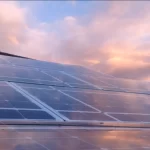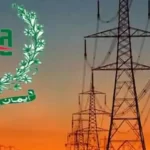To reduce line losses and manage Pakistan’s power shortfall, the government must update the infrastructure for the transmission and distribution of energy by working with the private sector.
Line losses are the major factor behind the nation’s current electricity shortfall. Power loss by distribution companies during transmission was estimated at 22,298 Gigawatt hours (GWh) in the fiscal year 2021–2022.
The financial impact of transmission and distribution losses due to the failure to meet National Electric Power Regulatory Authority (NEPRA) standards was also estimated at Rs520.3 billion for the same fiscal year.
According to LESCOBILLONLINE.NET, Tuaha Adil, a research economist at the Policy Research Institute of Market Economy, government bailouts to keep the distribution companies (DISCOs) afloat, lax regulation by the regulator, and the mismanagement of those firms prevented the DISCOs from increasing their efficiency and reducing losses.
The Peshawar Electric Supply Company (PESCO) recorded the largest losses, at 6,205 KWh, per the data. Massive losses are also being incurred by other DISCOS like LESCO and MEPCO.
“The lack of attention paid to the upgrading of infrastructure for distribution and transmission of electricity is mostly to blame for the government’s inability to reduce transmission and distribution losses. The production of electricity is always given priority by the government, according to Adil.
According to him, distribution businesses, with the exception of K-Electric, lost 22,298 GWh of electricity in 2022, totaling Rs520.3 billion in transmission and distribution losses.
He claimed that in order to make up for the line losses, the government would have to increase subsidies, the base price and LECO tariffs. He further stated that customers ultimately bore the cost of the inefficiencies.
According to lescobillonline.net study, the nation’s total installed capacity for power generation increased from 39,772 megawatts in the year 2021 to 43,775 megawatts in the financial year 2022.
In 2022, private-sector power plants produced 20,730 megawatts of electricity, compared to 23,045 megawatts from public-sector power plants.
During the busiest summer months, the nation uses a total of about 28,000 megawatts of energy. The country has a surplus of power-producing capacity, but the electricity is not being used because of outdated transmission and distribution systems, according to generation and consumption trends.
The focus should be placed on the transmission and distribution sector of the power sector because Pakistan can produce more electricity than it needs. Interventions at the technical and policy levels are required to address the problems in the electricity sector.
The private sector’s involvement is essential because the government lacks the resources to upgrade the infrastructure on its own. Through the privatization of distribution businesses, the private sector may participate in the upgrading of the electrical infrastructure.
Infrastructure improvement can be funded with the profits made by the privatization of distribution firms.
The National Electricity Policy 2023 acknowledges that the recovery targets set by NEPRA are unreasonable and do not reflect the actual cost when determining electricity pricing. The recovery goals should be set taking into account local conditions and feedback from distribution businesses.
Technical changes include implementing automated meter reading (AMR), energy auditing and accounting, geographic information system (GIS) indexing and network mapping, and human resource development to improve the skills of regulators and staff of government-owned DISCOs.
According to a study by lescobillonline, regular training sessions for the entire team should be held, together with required workshops on effective procedures, to keep personnel up to date with new technological advancements.




